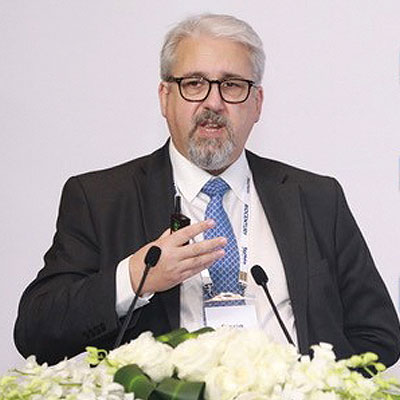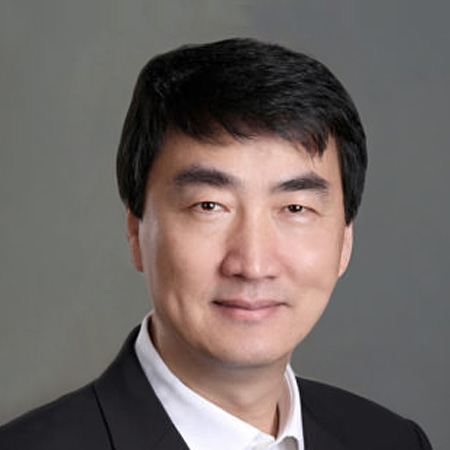Scrip Asks...What Does 2022 Hold For Biopharma? Part 3: Technology And Science
Genetic Medicines, RNA Technologies, Protein Degraders Among Hot Areas
Executive Summary
Many industry leaders expect broad progress in the field of RNA technologies following the rapid and successful roll-out of mRNA vaccines against COVID-19 last year. Genetic medicines of various types, emerging platforms for tackling previously “undruggable” targets and the microbiome were among other areas singled out as areas to watch in 2022.
“Biomedical innovation is at its golden age, and scientific innovation will continue to be strong,” declared Søren Møller, managing partner at Novo Seeds, the life science start-up financing arm of Novo Holdings. His words summed up the general perspective of a great many of the 200+ executives and experts canvassed by Scrip for their views on what the coming year holds for the biopharma industry.
The optimism is perhaps unsurprising, following two pandemic years in which the industry has rapidly delivered effective vaccines and therapeutics to reduce the damage wrought by SARS-CoV-2. Furthermore, it builds upon what was an already burgeoning environment for biomedical advances.
“We will see greater and greater platform innovation across the industry, continuing the trend we have seen over the last decade that has made this the greatest period of biopharma innovation any of us have seen,” said Eric David, CEO of gene therapy at BridgeBio. “Much of the innovation continues to be very early stage, but incredibly promising, and will be applied to historically neglected diseases large and small, including to antivirals and antibiotics broadly and novel approaches for gene, cell and tissue-based therapies.”
“I remain more optimistic than ever about the future of biotechnology,” said David Arthur, CEO of cancer-focused biotech firm Salarius Pharmaceuticals, Inc. “As an industry, we achieved historic successes in 2021 with the development of multiple vaccines for COVID-19 and the new wave of antiviral drugs to treat the infection. These accomplishments once again demonstrate the power of innovation to bring forth life-saving medicines and the importance of investment in drug discovery and development.”
Koenraad Wiedhaup is founder and CEO of Leyden Labs, which is developing nasal spray technologies to protect against respiratory viruses. “In 2022, I anticipate we will see a continued interest in investing in new approaches at maximum speed,” he predicted. “The ongoing COVID-19 pandemic shows us that even with the impressive and rapid development of new platforms, we are not yet ready…even more so since we don’t know when the next pandemic or disease outbreak will be. Together with scientists and private investors, governments are jumping in to maximize the speed of development and advancement of groundbreaking science and technologies. 2020 and 2021 showed that together we can develop new technologies and products in a radically new and rapid manner – there is only a way forward from here to focus on real new approaches at full throttle. We owe it to the world.”
Read on for a deeper dive into the areas of science and technology that executives expect to see progress significantly over the coming year.
DROP DOWN LINKS TO CHAPTERS:
Cell Therapies
“I’ve been in the cell therapy and regenerative medicine space for several decades, and when I began my career, it really did seem like science fiction,” remarked Laura Niklason, president and CEO of Humacyte, Inc., which is developing universal, off-the-shelf bioengineered human tissue, initially focusing on human acellular vessels for vascular applications. “Now, with advancements in cell biology and tissue engineering, there is a fundamental shift in regenerative medicine and what can be possible with cells and tissues, and it is becoming science fact.”
Commenting that her company’s platform has the potential to “to create complex tissue and complex organ solutions for some of the biggest chronic diseases in medicine,” Niklason was “excited about what the future holds for this dynamic space.”
Nearly five years since the first autologous CAR-T cell therapies were approved for leukemia, interest in the area is high. As Novo Seeds’ Møller commented, “more advanced therapeutic modalities like new generations of optimized and engineered cell therapies, reprogramming etc. is an area of substantial innovation and opportunity.”
Indeed, improved technologies and broader applications were key themes from executives who highlighted cell therapies as an area to watch in 2022.
Jakob Dupont head of global R&D at Atara Biotherapeutics, Inc., a company focused on developing off-the-shelf allogeneic T-cell immunotherapies, noted that “the allogeneic cell therapy field is exploding, with T-cell approaches leading innovation as the main factor behind successful immuno-oncology therapies.”
Observing that “while autologous T-cell therapies have been life-changing for many patients, allogeneic platforms hold the promise of personalized, off-the-shelf treatments manufactured at scale and quickly delivered to the patient, he expected that “our field will continue to build on this momentum in 2022 as we see a shift from autologous to allogeneic cell therapy approaches, in addition to broadening applications into non-oncologic indications like autoimmune diseases.”

“Novel technologies to enhance autologous CAR-T therapy and novel combination partners such as oncolytic viruses will allow autologous CAR-Ts to make significant inroads into the treatment of solid tumors.”Manuel Litchman, Mustang Bio
But Manuel Litchman, president and CEO of Mustang Bio Inc., which has a pipeline of autologous CAR-T cell therapies as well as gene therapies, perhaps unsurprisingly saw continuing opportunity for autologous approaches. “While allogeneic CAR-T and CAR-NK programs have faced challenges, data this past year from novel autologous CAR-T therapies would suggest that the safety, efficacy, and durability of response of this therapeutic class will continue to improve in 2022,” he told Scrip. “This trend offers the potential for the current pipeline of autologous CAR-T therapies to replace approved CAR-T products in the treatment paradigm for certain blood cancers.”
Litchman also expected to see expansion of autologous CAR-T therapies into new therapeutic areas: “Novel technologies to enhance autologous CAR-T therapy and novel combination partners such as oncolytic viruses will allow autologous CAR-Ts to make significant inroads into the treatment of solid tumors.” And he also predicted ongoing interest in in vivo as opposed to the currently licensed ex vivo approaches: “The past two years have seen the emergence of novel in vivo CAR-T technologies, with substantial capital being raised to fund new companies and strong interest in these companies from big pharma, and we expect this trend to continue in 2022.”
Like Litchman, Atara’s Dupont also highlighted solid tumors as an important area of cell therapy progress to watch this year. “As we see progression into using cell therapies to treat solid tumors, new issues arise that require a multidimensional approach—potentially an enhanced type of T cell. CAR T cells that retain the native T-cell receptor (TCR), rather than requiring gene editing of the TCR, could prove to be an effective approach. Next-generation armoring techniques, like novel 1XX costimulatory domain technology to help avoid cell exhaustion, reduce cytokine release syndrome, and improve persistence, and PD-1 dominant negative receptors that can be added to CAR T cells aimed to circumvent the hostile tumor microenvironment, may help improve antitumor activity which could be the secret to target solid tumor malignancies,” he elaborated. “This is why a great deal of R&D – both from Atara and industry-wide – is focused on identifying new approaches and technologies that can eliminate such cancers. It is an exciting time to see and be involved with all the innovation happening to create and deliver new therapies for those patients who need them most.”
Jennifer Buell, president and CEO of MiNK Therapeutics, Inc., which develops allogeneic, invariant natural killer T-cell therapies, predicted “an increase in cell therapy applications in immune diseases like solid tumor cancers and infectious diseases alone and in combination with antibodies, targeted therapies, and standard of care treatments.”
Cory Nicholas, CEO of Neurona Therapeutics, will also be watching for clinical data on the application of cell therapies beyond oncology. "Blood cell therapies continue to show great potential to address cancer, but we are also seeing success and exciting advances using other types of cell therapies in regenerative medicine strategies toward the treatment of a variety of diseases, including disorders of the central nervous system (CNS) and diabetes,” he said. “Regenerative cell therapies for chronic diseases of the CNS, such as inhibitory neurons for chronic epilepsy and dopaminergic neurons for Parkinson’s, are examples of this type of approach. Cell therapies that rebuild and replace missing or damaged cells and tissues may be the only way to effectively intervene in a potentially curative manner for drug-resistant diseases of the nervous system. In 2021, we saw the emergence of this next wave of cell therapies entering clinical trials for epilepsy, diabetes, and Parkinson’s disease. In 2022 we expect to see some of the first-in-human data from these cell therapy trials that have the potential to be significantly disease-modifying for people who previously have not had effective therapeutic options.”
Stem cell-derived therapy development was highlighted by Michael Yang, president and CEO of ViaCyte, Inc.. “These are exciting times for the regenerative medicine field as we advance stem cell-derived therapies in the clinic, and our technology moves from promise to proof. Years of bench research are converging with state-of-the-art cell manufacturing and gene-edited cell engineering, setting up a pivotal year. Through our partnership with CRISPR Therapeutics, patients will soon be enrolled in a first-in-human study evaluating engineered immune-evasive cell therapy aimed at reducing the treatment burden for people with type 1 diabetes,” he said. “Given all that’s happening in the field, 2022 is shaping up to be a very eventful year.”
Carlo Russo, chief medical officer and head of development at Genenta Science srl, and Mark Gergen, CEO at Poseida Therapeutics, Inc., both highlighted manufacturing techniques as areas likely to see improvement in the cell and gene therapy space in 2022.
“The complexity and costs associated in manufacturing cell and gene therapy products has historically significantly limited the growth of the entire space,” commented Russo. “One of the positive outcomes derived from the COVID pandemic is the renewed interest and the associated infusion of capital in development of sophisticated manufacturing processes and analytical technologies to produce biological products. In the not-too-distant future cell and gene products will become more affordable and more easily scalable which in turn will allow the treatment of large patient populations.”
“I believe we will see a continued migration from older viral-based technologies in both cell therapy and gene therapy to better options,” said Gergen. “That shift toward new technologies and non-viral approaches will accelerate as some of these new methods begin to demonstrate the potential for greater safety, efficacy and durability for patients.”
Gene Therapies
Several executives were bullish on the prospects for gene therapies, despite a string of safety issues in 2021, and reimbursement challenges such as those that led bluebird bio to exit the European commercial market for its Zynteglo (betibeglogene autotemcel) gene therapy. (Also see "AAV Gene Therapy Panel Shined Light On Safety Issues That Sponsors Have Downplayed – FDA’s Bryan" - Pink Sheet, 17 Nov, 2021.) (Also see "Bluebird Exits Europe, Casting Clouds Over Gene Therapy Commercial Effort" - Scrip, 9 Aug, 2021.)
“Biotechnology and pharma will continue to build on breakthroughs in gene therapies as they work through long-term safety questions,” said Kura Oncology, Inc. CEO Troy Wilson.
“We are also seeing tremendous progress in making these therapies more accessible to patients by addressing challenging obstacles for gene therapies, such as precision target identification, safe and effective delivery, consistent manufacturability and commercial viability.”Magdalene Cook, Renovacor
“The last few years have been an exciting time for gene therapy companies. Since the FDA approved the first of these therapies in 2017, we’ve seen a record number of new drug submissions and approvals each year,” said Magdalene Cook, president and CEO of Renovacor Inc., a company developing a gene replacement therapy for a rare genetically driven form of heart failure. “I expect 2022 to be another banner year for the field, as we continue to make great strides in the research and development of the technologies necessary to help address the underlying cause of previously identified, debilitating diseases. We are also seeing tremendous progress in making these therapies more accessible to patients by addressing challenging obstacles for gene therapies, such as precision target identification, safe and effective delivery, consistent manufacturability and commercial viability.”
For Kriya Therapeutics, Inc. CEO Shankar Ramaswamy, “Gene therapy is an incredibly exciting new modality, and we have only begun to scratch the surface of its full potential.”
He went on: “In recent years, we have seen tremendous progress in the science and technology underlying gene therapy, and we have also learned from challenges that continue to constrain the field. At Kriya, we are focused on integrating cross disciplinary capabilities to revolutionize how gene therapies are designed, developed, and manufactured - to support scale and reduce the time and cost of bringing these life-changing therapies to patients. We believe that gene therapy can fundamentally transform the treatment of a number of diseases, and we are prepared to lead this new frontier in medicine.”
New approaches were also top of mind for BridgeBio’s David, who said: “We will learn more in 2022 about clinical readouts with in vivo gene editing and novel AAV capsids and grow closer to clinical applications of alternative viral vectors, non-viral vectors and approaches to re-dosing of gene therapies.”
Gene Editing
“We have seen a fairly steady stream of negative news around in vivo gene therapy companies, whether that is AAV safety concerns or waning treatment effects. This can be contrasted with excitement building for gene editing, in particular for next-generation approaches that go beyond gene silencing/knockout,” said Dan Chancellor, director, thought leadership and consulting at Pharma Intelligence’s Datamonitor Healthcare. “It will be interesting to view individual clinical trial results for companies in this space against this backdrop and consider whether these catalysts are continuing this narrative or providing momentum in a new direction. 2022 may become the year in which editing comes of age, certain editors separate from the pack and secure big licensing deals, while traditional gene therapy companies cool off.”
Also focusing in on gene editing was 4BIO Capital managing partner Dmitry Kuzmin. “With the clinical validation of CRISPR/Cas9 gene editing in 2021, all eyes are on the possible avenues of expansion for this technology,” he said. “We see context dependency (on genotype, tissue, or external triggers) and precision as the key elements needed to expand the reach of this exciting technology.”
Steve Harr, president and CEO of cell engineering specialist Sana Biotechnology, Inc., also flagged up the 2021 breakthrough in gene editing achieved when Intellia Therapeutics, Inc. and Regeneron Pharmaceuticals, Inc. reported results from the first in vivo gene therapy trial in humans. (Also see "Intellia Achieves Gene-Editing Breakthrough With First In Vivo CRISPR Therapy" - Scrip, 28 Jun, 2021.) “In 2021, we saw the first case reports for the curative potential of both in vivo gene editing and stem-cell based medicines. I expect 2022 to be a year when the world more broadly recognizes the potential of these engineered cells,” Harr told Scrip. “While there will almost certainly be challenges within this field, and the industry more broadly faces the twin challenges of talent acquisition/retention and access to capital, progress in gene modification and stem cell-based medicines will drive significant value creation for patients, companies, and investors.”

“We've seen tremendous advances in gene editing techniques and capabilities over the years, and in 2022 I expect the field to grow even more.”Joseph Truitt, iECURE
Similarly, “In 2022, we look forward to seeing continued progress in genetic medicines especially LNP-encapsulated mRNA and gene-editing therapies,” commented David Lockhart, chief scientific officer and president, and Angèle Maki, senior vice president, business development, at ReCode Therapeutics. “With over 8.5 billion doses of LNP-encapsulated mRNA vaccines having been administered worldwide and on the heels of Intellia’s early clinical validation, there is reason for tremendous optimism. Particularly with the challenges that have been observed with viral vectors in recent years, the need for non-viral delivery agents has only gotten stronger.”
Joseph Truitt, CEO of iECURE, which is collaborating with the University of Pennsylvania on in vivo gene insertion therapies, agreed. "We've seen tremendous advances in gene editing techniques and capabilities over the years, and in 2022 I expect the field to grow even more,” he said. “The continued improvements of advanced technologies such as lipid-nanoparticle [LNP] delivery, gene insertion approaches, base editing and prime editing are positioning the field to develop transformational medicines for patients in dire need of treatment options."
RNA Technologies
Given the impact of the rapid development and roll-out of mRNA vaccines against COVID-19, mRNA and other RNA technologies were perhaps unsurprisingly frequently cited among the high hopes of industry leaders as we head into 2022.

“The year ahead will see further collaborations and deals as pharma looks to leverage the power of mRNA as a therapeutic modality across multiple therapeutic areas.”Steven Powell, eTheRNA
“This is a coming of age for mRNA technology – a now proven modality which offers a significant opportunity to build world class biotech pipelines beyond COVID-19,” said Steven Powell, CEO of eTheRNA Immunotherapies “The next generation mRNA platforms, such as eTheRNA’s technology, overcome the scientific and technical obstacles and will enable the development of best-in-class, long lasting, thermostable and tissue specific immune stimulatory mRNA therapies. The year ahead will see further collaborations and deals as pharma looks to leverage the power of mRNA as a therapeutic modality across multiple therapeutic areas.”
David Mead, business development director at Isogenica Ltd., a UK firm that develops single-domain antibodies for use in advanced therapeutics, thought the rising tide would carry other RNA technologies too. “In 2021 we enjoyed the tremendous achievement of COVID-19 mRNA vaccines (BioNTech SE/Pfizer Inc. and Moderna, Inc.) which confirmed the potential of RNA as a therapeutic agent. I predict that this success will reinvigorate Pharma’s interest to invest in RNA research and clinical development, after the setbacks of the early 2000s,” he commented.
4BIO Capital’s Kuzmin also noted that “mRNA vaccines and multiple clinical successes of RNAi therapies raised the profile of RNA in 2021 significantly. We view this as a key space where several major advances can come in 2022, including successes in RNA editing and further validation of the mRNA platform.”
“With multiple new modalities entering clinical development, RNA-based therapies will see a resurgence as they offer the promise of inducing transient changes to gene and protein expression,” agreed Kura Oncology's Wilson.
Mead went on: “This resurgence in RNA as therapeutics or vaccines will lead to an increase to the small number of FDA-approved therapeutics, broadening the scope for RNA-based vaccines and therapeutics; already 2022 has almost 30 trials scheduled.”
“The regulatory agencies have now accepted RNA as a valuable, effective and safe moiety. Investors equally will draw confidence to participate in RNA-based start-ups, applications and various diseases with a disruptive new drug class. Patients will gain relief or better from threatening diseases and infections. 2022 – the year when RNA becomes the norm in our industry!”
For Touchlight Genetics’ chief business officer Tommy Duncan, “The rise of the mRNA vaccines is just the beginning of the new era of genetic medicine. Advanced therapies, nucleic acid vaccines for infectious diseases as well as cancer will become an important part of the medical toolkit in the future. We have already seen the increasing rate of scientific research in this field, and underpinned by the success of the first COVID vaccines, we believe that these will be key drivers for the biopharma sector.”
For James Burns, CEO of Locanabio, Inc., “The importance of RNA has never been more evident. We know that dysfunctional RNA is the root cause of many devastating genetic diseases, with limited or no treatment options. Emerging data for targeting RNA with RNA-binding proteins gives hope for a new class of genetic medicine that can selectively and durably modify RNA by several mechanisms without the need for DNA modification.”
“RNA editing is quickly gaining awareness and traction among investors and in the scientific and medical communities.”Paul Bolno, Wave Life Sciences
“Whereas DNA-targeting approaches like gene editing have captured interest in recent years, I believe 2022 will see an increased interest in RNA-targeting approaches like RNA editing. RNA editing offers a titratable and reversible mechanism for addressing genetic diseases without introducing permanent genetic changes,” said Paul Bolno, CEO of WAVE Life Sciences Ltd.. “We generated in vivo data in 2021 which demonstrated that oligonucleotides can harness enzymes that already exist in the body, called ADAR, to elicit highly specific single base changes in RNA and produce healthy, wild-type alpha-1 antitrypsin protein, without needing complex delivery vehicles like viral vectors. RNA editing is quickly gaining awareness and traction among investors and in the scientific and medical communities. It offers an attractive alternative to DNA editing or gene therapy for certain genetic diseases and also holds potential in non-genetic diseases, such as through modulation of protein-protein interactions. It’s a promising approach to potentially treat countless severe diseases.”
Also at the cutting edge of RNA therapeutics is Cartesian Therapeutics, Inc., which is looking to RNA-engineer cells (as opposed to conventional DNA-engineering of cells and without the need to package RNA into lipid nanoparticles). CEO Murat Kalayoglu noted that “developments in cancer therapies have driven the R&D focus of biotech for the past few years. At Cartesian, we have tried to expand on the innovations made in cell therapy development but apply those learnings beyond oncology. We are pioneering the first RNA cell therapies in additional indications. We look forward to continued advancements in the cell and gene space.”
Vaccines
For vaccines more broadly, Anton Mat, director of business development, ISA Pharmaceuticals B.V., expects that “continuing success of mRNA prophylactic vaccines will translate into increased interest in immunotherapies, including therapeutic vaccinations for cancer.”
Rodolphe Besserve, CEO of European biotech start-up launcher eureKARE, also forecast COVID-19 vaccines driving interest in the broader field. “A major topic that we perceive for 2022 and started to see already in 2021 is a direct and positive result of the COVID-19 mRNA vaccine. eureKARE has seen growing interest in identifying other pathologies that may benefit from mRNA vaccines,” he said. “This interest in the vaccine space is also pushing more ‘out of the box’ thinking including: delivery of vaccines via engineered bacteria strains, improving the temperature stability conditions for vaccines to achieve a truly pan-global flu vaccine, and the aim of developing precision vaccines as well. We expect 2022 to be the year that more deals are being done for assets/biotech companies in this space.”

“Intranasal vaccination has now reached the precipice of transforming the vaccine industry.”Chad Costley, BlueWillow Biologics
Chad Costley, CEO of BlueWillow Biologics, also homed in on vaccine enhancements to come. “Expanding the acceleration towards development of a new generation of vaccine technologies driven in 2021 by the COVID-19 pandemic must be a major thrust in 2022. The success of mRNA technology in preventing disease has proven that old paradigms can be improved upon. However, the now evident limitations of mRNA in eliciting mucosal immunity and thus halting nasal carriage and shedding of respiratory pathogens highlight the need for additional novel approaches,” he told Scrip.
“Specifically, intranasal vaccination has now reached the precipice of transforming the vaccine industry. Previously hindered by safety and efficacy concerns, the long sought-after promise of protective, needle-free and inexpensive vaccination is now within our reach. The vaccine industry will be looking in 2022 for robust private and public support for what is clearly an important component of ending the current pandemic and preparing us for the next worldwide disease threat.”

“2022 will be big in particular for the clinical validation of targeted protein degradation.”Dan Chancellor, Datamonitor Healthcare
Protein Degraders
“While gene therapies are becoming more sophisticated, there is also a renaissance in older drug technologies,” observed Datamonitor Healthcare’s Chancellor. “Small molecule protein degraders can achieve functional knockout of proteins, increasing the universe of druggable targets, while conjugated antibodies (e.g. antibody-antibody, antibody-drug, antibody-oligo) can overcome the shortcomings of much more complex drugs – all of these drug classes are growing at pace. There is a lot of mileage left with existing drug technologies that will help to temper expectations for the biotechs at the cutting edge of genetic science, and provide balance in big pharma pipelines. 2022 will be big in particular for the clinical validation of targeted protein degradation.”
“2022 will be a big year for heterobifunctional molecules [which act as protein degraders],” commented Owen Smith, investment director at 4BIO Capital. “Proteolysis targeting chimera (PROTACs) which ubiquitinate and send proteins to the proteosome will gain further clinical validation as leading companies share more and more data updates and advance pivotal approval studies. In addition, alternative approaches to manipulating proteins through proteasomal, lysosomal and autophagy pathways will continue to emerge and share data, generating significant excitement from pharma and investors.”
“The promise of targeted protein degradation is being realized, offering tremendous expansion of the repertoire of druggable targets and providing a new modality to address unmet needs for validated pathways,” said Arthur Sands, president and CEO of Nurix Therapeutics, Inc., a company working in the space. “We have already seen clinical data demonstrating the first proof of mechanism of targeted protein degradation in patients with hematologic malignancies supporting the potential of this class of medicines as therapies for a range of indications, and 2022 will be a rich year for additional clinical data in this promising field.”
Daniel Mandell, CEO of GRO Biosciences Inc. agreed. “In 2022, our increasing understanding of protein structure will drive tangible progress in the clinic through rational engineering of complex processes like allostery and degradation,” he said. “We’ll also witness breakthroughs on specific tolerization of patients to known antigens that will ultimately help patients with disease or treatment failures resulting from immune reactions.”
Other Novel Approaches
“With the past couple years shining a bright light on transformational technologies, such as mRNA vaccines, in 2022 we will continue to see new platform technologies be given center stage,” said Daniel Cohen, CEO of 3DBio Therapeutics. “There is a renewed interest in backing technical approaches that are truly novel and bring uncharted regulatory pathways along with it. We look forward to seeing big movement in patient care using cutting edge 3D-printing technology and processes to bring living tissue implants to patients.”
He added: “We will see an acceleration of convergence technologies which will pave the path toward new first-in-medicine milestones. Cell therapies continue to advance and are converging with advanced materials technologies and robotics, leading to new platform opportunities.”
Epigenetic therapeutics were flagged up by James Brown, president and CEO of DURECT Corporation. “In 2022 there will be more investment in drugs that expand beyond known pathways of disease, that act at higher levels of disease dysregulation,” he said. “Leveraging novel endogenous epigenetic regulators to address cellular dysregulation is a new era of innovation and focus for biotechnology that holds great promise. This field is already showing potential to provide life-saving therapies for diseases that lack treatment options. Historically epigenetic therapy has been used as a means of chemotherapy to treat cancer patients and we predict that in 2022 we will see this type of therapy more broadly applied to additional indications where it may benefit those with currently untreatable diseases.”

“We anticipate the rise of covalent drugs in targeting ‘undruggable targets’ across different therapeutic areas.”Ping Cao, BridGene Biosciences
Ping Cao, CEO of BridGene Biosciences, Inc., noted that “omics” – including genomics, metabolomics, metagenomics and proteomics – have “the potential to transform the pharmaceutical industry.” He said: “Research is providing insights into the identification of new targets responsible for driving disease progress and symptoms. Many of the new proteins identified as relevant to disease are tough to drug using traditional approaches to drug development and discovery. New technologies are making these formerly “undruggable” targets druggable. For instance, chemoproteomics using live cell screening with covalent small molecules can identify inhibitors of previously undrugged targets and develop new approaches to the treatment of diseases. Similarly, protein degradation promises to address tough new targets.”
Cao also predicted a rise in R&D around covalent drugs, which “block protein function by forming a specific covalent bond between the ligand and target protein.”
He explained: “As a therapeutic class, these medications have had a major impact on human health, ranging from aspirin and penicillin to proton pump inhibitors for gastric reflux and many cancer drugs. Often, they were chosen through serendipity and without a complete understanding of their molecular mechanisms. A covalent interaction can provide many pharmacological advantages over a reversible mechanism of action, including great potency and longer duration of action. Greater specificity and selectivity achieved with carefully designed reactive covalent warheads, innovative design, and profiling across the entire proteome can alleviate safety concerns.”
On prospects for this class, Cao said: “Today, covalent small molecules are being developed to address more and more previously undruggable targets, both to hit shallow binding pockets of allosteric sites and to disrupt protein-protein interactions for previously undruggable targets. We anticipate the rise of covalent drugs in targeting ‘undruggable targets’ across different therapeutic areas in the next decade.”
Precision Medicine
“In 2022, more and more hospital-based clinicians will begin to practice precision dosing at the point of care, especially for specialty drugs,” predicted Sirj Goswami, CEO of InsightRX, a healthcare technology company that has developed a cloud-based platform for precision medicine and clinical analytics designed to individualize treatment at the point of care.
Emily Leproust, CEO of Twist Bioscience Corporation, pointed to advances enabled by precision medicine. “With the advent of precision medicine, there has been an evolution in the biopharma field to generate better antibodies that can be optimized further to enhance characteristics, such as affinity and efficacy,” she said. “In 2022, companies, including Twist, will leverage synthetic DNA, in vivo models of the immune system along with artificial intelligence and machine learning technologies to identify and optimize novel antibody therapeutics faster and more effectively, with proof points across the industry.
Microbiome
The microbiome has been a hot topic for some years now, but executives Scrip spoke to see it as a still emerging field with much still to be understood. Nonetheless, there is excitement for the year ahead.

“We are only just entering the decade of the microbiome.”Isabelle de Cremoux, Seventure Partners
“The microbiome therapeutics field has made incredible progress. Buoyed by late-stage clinical successes reported in C. difficile infection, numerous ongoing trials are now generating promising clinical data in a range of diseases, taking the microbiome beyond the gut,” commented Alex Stevenson, chief scientific officer of 4D Pharma Plc. “In 2022, I expect we’ll continue to see microbiome clinical programs expand beyond gastrointestinal indications, as this is just the tip of the iceberg and we are already seeing the tremendous potential for live biotherapeutics to achieve systemic impacts on disease biology, from cancer, to neurodegenerative disorders, metabolic diseases and immune-inflammatory conditions. To continue propelling the field forward in 2022 and beyond, and really establish this new therapeutic class for diseases beyond GI, as a field we’ll need to keep successfully demonstrating our ability to secure robust IP protection, scalable manufacturing and, I am confident, the positive clinical data will speak for itself.”
Isabelle de Cremoux, CEO and Managing Partner of venture capital firm Seventure Partners, noted that “Seventure’s Health for Life Capital I fund was among the first funds with prime focus on the microbiome and related fields.” She said: “Seven years on, we now have a more profound understanding on the role the microbiome plays in our overall health, but there is much more to discover and so Seventure believes that we are only just entering the ‘decade of the microbiome’."
Artificial Intelligence
“With the success of companies like Exscientia Ltd., Atomwise, Inc. and Abcella, AI [artificial intelligence] enabled technologies and the applications within drug discovery is an area to watch,” said Novo Seeds’ Møller. “Much more will come from this space.”
Peptilogics, Inc. CEO Jonathan Steckbeck agreed. “Over the last few years, AI has made significant contributions across the healthcare value chain; examples include applications enabling diagnosis, improving the drug discovery and development process, and tools for patient recruitment into clinical trials,” he said. “In 2022, we will see a continuing acceleration of artificial intelligences' impact on drug discovery and development. As programs from early companies in the space advance and strengthen the credibility of the overall approach, we will also see companies that build on those existing foundations bring forward additional approaches and capabilities to continue advancing the convergence of biology and technology.”
Stephen Page, founder and brand and strategy director at communications agency Page & Page and Partners, also pinpointed AI among key factors that will shape the future of biopharma. “Individually customized treatments, driven by mass data availability, patient insights and artificial intelligence are going to be a big influence for the biopharma industry in 2022, and beyond. The industry as a whole will need to adapt and evolve if it is to remain at the forefront of disease identification, prevention and treatment,” he said. “We have already seen advances in early detection and precision intervention to fuel personalized drug therapies, and with the introduction of robotics, nanotechnology, tissue engineering, for example, these will move from being a trend to standard technologies.”
Diagnostics
At the same time as therapeutic science is progressing on multiple fronts, diagnostic and testing technology is advancing, with applications both in patient care and in therapeutic development, as noted by Philippe Mourere, CEO of French digital PCR company Stilla Technologies. “We’re already witnessing the trend toward next-generation sequencing data becoming more accessible and closer to the patient point-of-care,” he told Scrip. “One example is Labcorp’s recent acquisition of PGDx [Personal Genome Diagnostics Inc.], enabling hospitals and laboratories to bring precision oncology genomic testing in-house through kit-based options, as well as the recent launch of Roche and Foundation Medicine, Inc.’s AVENIO Comprehensive Genomic Profiling Kit that laboratories can run in-house.
“Taking this one step further, medical centers will soon have the ability to perform not only assays that deliver data, but tests that deliver actionable answers. In 2022, I predict we will witness an even stronger demand for faster turnaround time, higher precision and sensitivity, and control of costs and samples at medical centers through in-house testing,” said Mourere.

“In 2022, we expect to see novel protein-based diagnostics really come into focus, with their potential to address the unmet diagnostic needs for many complex diseases.”Caroline Loew, Glympse Bio
“Maintaining control of meaningful patient data and samples will also allow for continuation of translational research studies. In addition, we will see a democratization of focused genetic signature assays that would complement larger genomic datasets,” he concluded.
“In 2022, we expect to see novel protein-based diagnostics really come into focus, with their potential to address the unmet diagnostic needs for many complex diseases,” said Caroline Loew, president and CEO of Glympse Bio , a company developing in vivo sensing technology for disease monitoring. “An example of this is NASH [non-alcoholic steatohepatitis], a chronic liver disease where the diagnosis remains difficult and complex. Glympse has developed a protein activity biosensor technology that can be applied in a simple blood draw for the accurate diagnosis and monitoring of disease, and NASH is the lead indication. In 2021, we presented data demonstrating the ability predict NASH vs. healthy with 0.97 AUC from a blood sample. Contrast this approach to the standard of care today for detecting NASH – a needle biopsy, which is a painful, invasive procedure that is inherently inaccurate. Moving forward, we expect to see protein-activity diagnostics with broad applicability in disease diagnosis and understanding treatment response across a range of diseases such as fibrotic diseases, cancers, and autoimmune diseases.”
Additional reporting by Joseph Haas.
